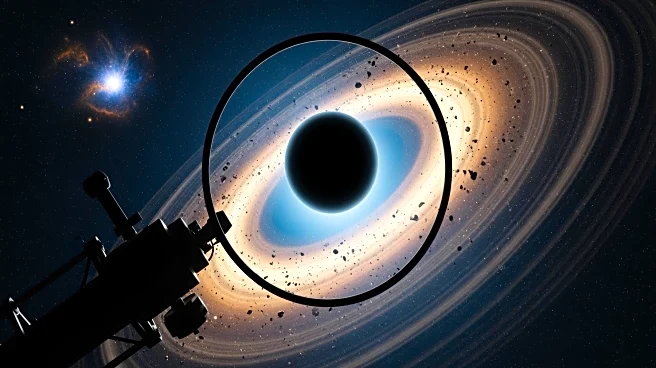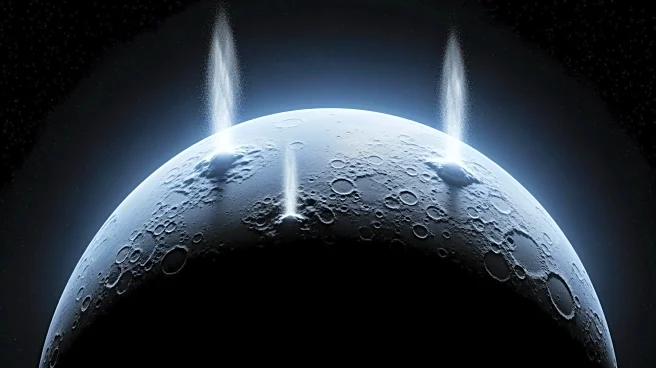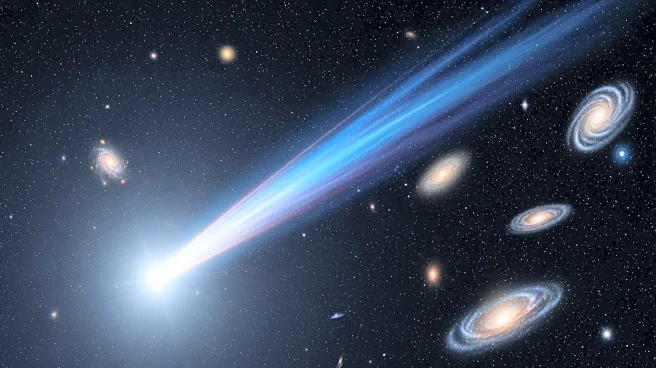What's Happening?
Astronomers have identified a new super-Earth candidate orbiting the M-class red dwarf star GJ 251, located less than 20 light-years from Earth. This potential planet, which has at least four times the mass of Earth, was detected through a new analysis
of over 20 years of data. The candidate planet, named GJ 251c, is believed to orbit its star every 54 days and is situated in the habitable zone, where conditions might allow for liquid water on its surface. The discovery was published in the Astronomical Journal, with the research team led by Suvrath Mahadevan from Penn State. The team identified six repeating dips in the star's luminosity, attributing one to the known planet GJ 251b and another to the new candidate. The star itself is 4.6 billion years old and past its flaring phase, though stellar activity can sometimes mimic planetary signals.
Why It's Important?
The discovery of GJ 251c is significant as it adds to the growing list of potentially habitable exoplanets that could be studied with next-generation telescopes. The proximity of this super-Earth candidate makes it a prime target for future observations, which could provide insights into its atmosphere and surface conditions. If GJ 251c has a thick, carbon dioxide-rich atmosphere, it might support liquid water, a key ingredient for life as we know it. This finding could have implications for our understanding of planetary formation and the potential for life beyond Earth. The research also highlights the challenges of distinguishing between planetary signals and stellar activity, underscoring the need for advanced observational techniques.
What's Next?
Future observations are needed to confirm the existence of GJ 251c and to study its atmospheric composition. While NASA's Habitable Worlds Observatory mission may not be able to capture a direct image of the planet due to its proximity to its host star, the Thirty Meter Telescope, if completed, could potentially provide such images within the next decade. This would allow scientists to better understand the planet's potential habitability and contribute to the broader search for life in the universe.
Beyond the Headlines
The discovery of GJ 251c raises questions about the habitability of planets orbiting red dwarf stars, which are known for their stellar activity. Understanding the atmospheric conditions that could support liquid water on such planets is crucial for assessing their potential to host life. This research also emphasizes the importance of long-term data collection and analysis in the field of exoplanet discovery.













